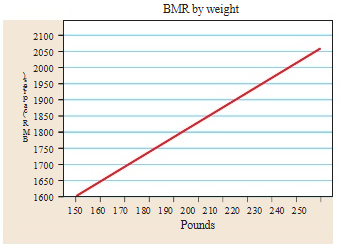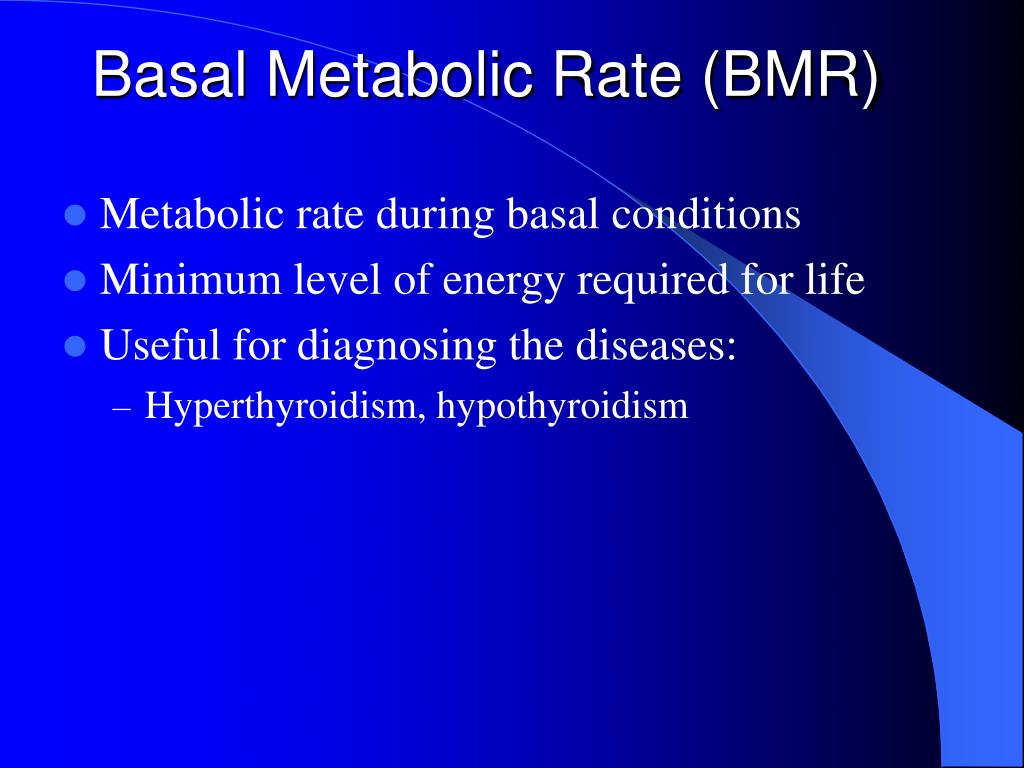
1.9: extra active (very hard exercise, training, or a physical job).1.725: very active (hard exercise every day, or exercising twice a day).

1.55: moderately active (moderate exercise 6 to 7 days per week).1.375: lightly active (light exercise 1 to 3 days per week).To calculate your TDEE, you’ll need to add an activity factor to the equation: However, since we do not use BMR to calculate our total daily calorie needs, it’s really only the first step of a larger equation. It’s an indicator of your metabolic activity before considering daily movement. Your BMR tells you how many calories you burn at rest.
#Basal metabolic rate bmr for free
You can also chat, call, or text anonymously with trained volunteers at the National Eating Disorders Association helpline for free or explore the organization’s free and low cost resources. They can be caused by any combination of biological, social, cultural, and environmental factors - not just by exposure to diet culture.įeel empowered to talk with a qualified healthcare professional, such as a registered dietitian, if you’re struggling. These behaviors may indicate a disordered relationship with food or an eating disorder.ĭisordered eating and eating disorders can affect anyone, regardless of gender identity, race, age, body size, socioeconomic status, or other identities. If you are preoccupied with food or your weight, feel guilt surrounding your food choices, or routinely engage in restrictive diets, consider reaching out for support. Counting calories and tracking exercise have both been associated with greater eating disorder symptoms. Trying to “do it right” when it comes to nutrition may feel tempting, but it can backfire. To calculate your TDEE (the total calories you need each day), you need to multiply your BMR by an activity factor.

It’s only the number of calories your body needs at rest. While it’s useful as a starting point, your BMR is not the number of calories your body needs in a day. At rest, he’ll burn around 1,882 calories in a day.Ī 35-year-old female who weighs 150 pounds (68 kg) and is 5 feet 7 inches (170 cm) tall will burn around 1,409 calories per day at rest. Females: 10 × weight (in kilograms) + 6.25 × height (in centimeters) – 5 × age (in years) – 161įor example, a 35-year-old, 200-pound (90.7-kg), 6-foot (183-cm) male would have a BMR/RMR of 1,882.Males: 10 × weight (in kilograms) + 6.25 × height (in centimeters) – 5 × age (in years) + 5.Jeor equation, you’ll need to use one of two equations: To calculate your BMR/RMR using the Mifflin-St. However, BMR and RMR are often used interchangeably, and calculating your RMR should get you a pretty close estimate of your BMR. BMR is more restrictive and measures calories with zero movement in the day. RMR determines the calories you burn at rest with minimal movement. Technically, this equation calculates your resting metabolic rate (RMR), which is slightly different from BMR.

Jeor equation is a popular way to calculate it quickly. However, since most people do not have access to these devices, researchers have developed more convenient methods of calculating BMR.

BMR is a useful concept in some situations but not in others.Your BMR can be calculated using direct calorimetry, indirect calorimetry, or a quick math equation. It is suggested that in different-sized mammals, the secretion/production of thyroid hormones is a result of BMR differences rather than their cause. The secretion and production of thyroid hormones in mammals are related to body mass, with the allometric exponent similar to BMR yet there is no body size-related variation in either total or free concentrations of thyroid hormones in plasma of mammals. In both mammals and birds, membrane polyunsaturation decreases and monounsaturation increases with increasing body mass and a decrease in mass-specific BMR. The membrane pacemaker theory proposes that the fatty acid composition of membrane bilayers is an important determinant of a species BMR. The BMR of mammals varies with body mass, with the same allometric exponent as field metabolic rate and with many physiological and biochemical rates. It was also important in defining the allometric relationship between body mass and metabolic rate of mammals. The concept of basal metabolic rate (BMR) was developed to compare the metabolic rate of animals and initially was important in a clinical context as a means of determining thyroid status of humans.


 0 kommentar(er)
0 kommentar(er)
